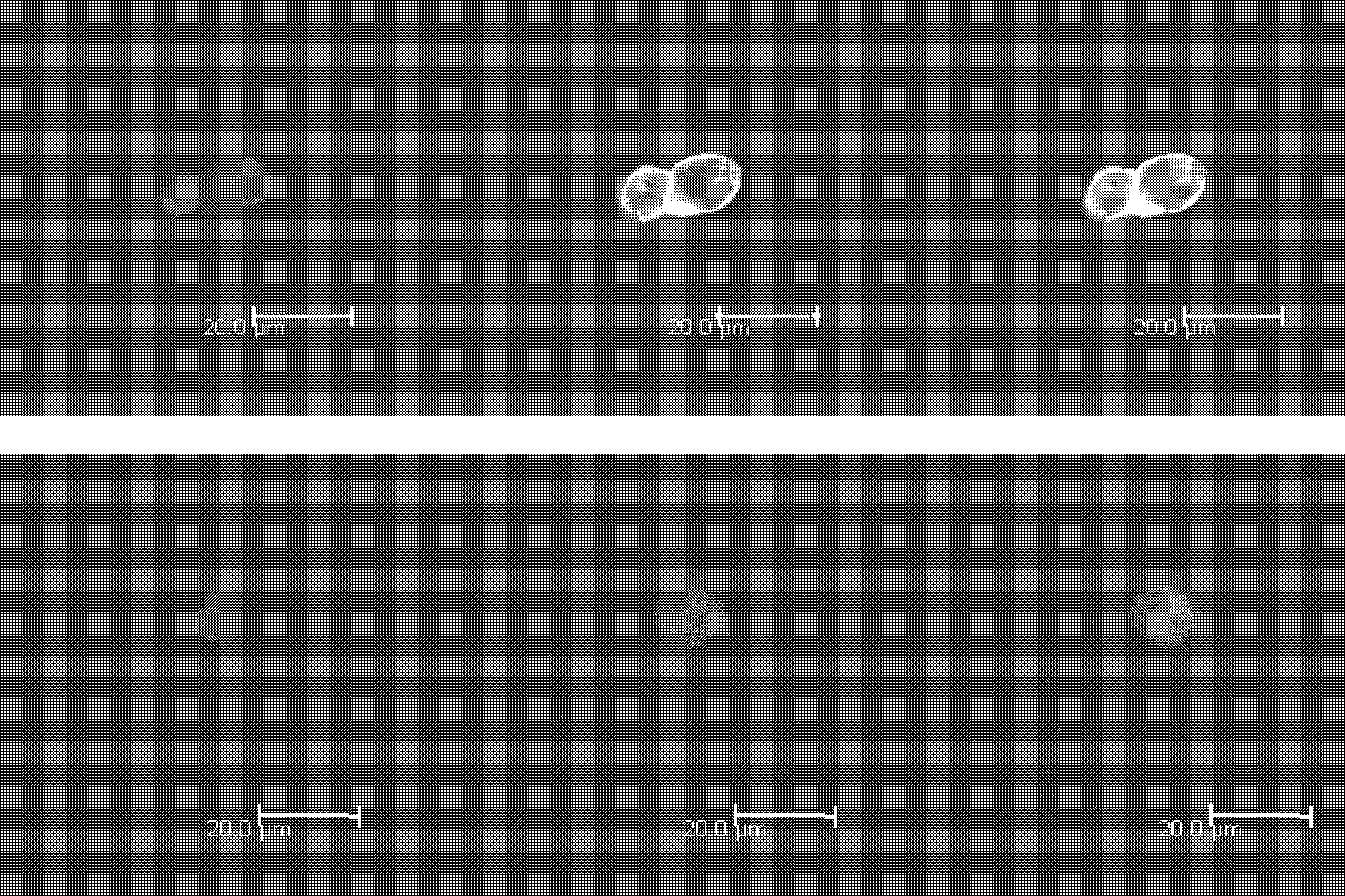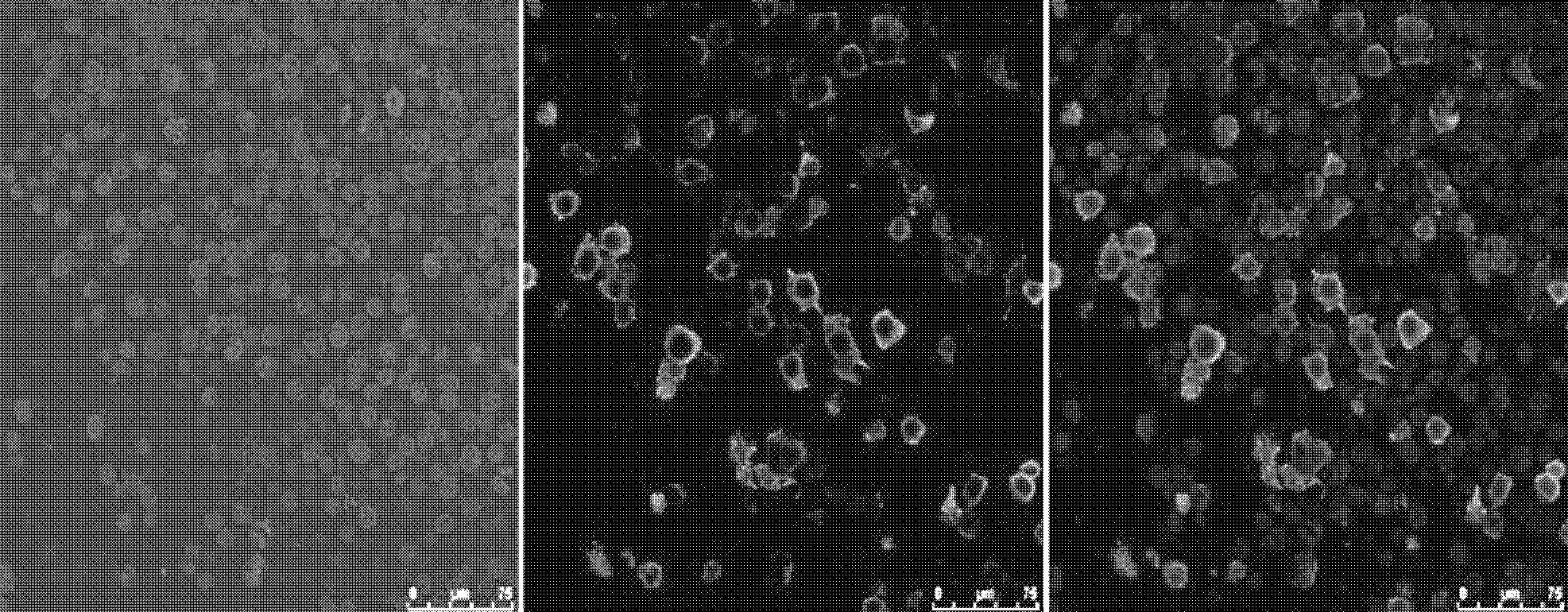C9ORF135 gene, its encoding protein and application of antibody thereof
A gene and antibody technology, applied in the application field of gene C9ORF135
- Summary
- Abstract
- Description
- Claims
- Application Information
AI Technical Summary
Problems solved by technology
Method used
Image
Examples
Embodiment 1
[0047] Example 1 Preparation of polyclonal antibody of gene C9ORF135
[0048] Use the conserved amino acid sequence encoded by this gene to prepare polyclonal antibody (rabbit source).
[0049] 1. Antibody Preparation
[0050] 1.1 Synthesize a short peptide, amino acid sequence: VERKGSLTLRSHHKKY, as an antigen.
[0051] 1.2 Before the antigen injection, it is necessary to collect some normal serum from rabbits, and use it as a negative control when the detection antibody is prepared. After the rabbit is stable in the new environment, it will take about four days, and blood can be taken from the ear artery, with a blood volume of about 5ml.
[0052] 1.3 Purify the antigen used for immunization, and the antigen can be injected after being fully emulsified by FCA or FIA. After mixing the antigen solution and the adjuvant in equal proportions, place it on a mixer and oscillate vigorously to emulsify the antigen fully. After oscillating, centrifuge at 1000rpm for one minute. If ...
Embodiment 2
[0065] Example 2 Preparation of monoclonal antibody against gene C9ORF135
[0066] 1. Animal Selection and Immunization
[0067] 1.1 Selection of animals
[0068] Purebred BALB / C mice are more docile, have a small range of activities outside the nest, are weak, eat less food and discharge less sewage, and can be raised and lived in laboratories with a generally clean environment. At present, laboratories developing hybridoma technology mostly use purebred BALA / C mice.
[0069] 1.2 Immunization scheme
[0070] Initial immunization: 1-50 μg of antigen plus Freund's complete adjuvant in mice with subcutaneous multi-point injection or intrasplenic injection (generally 0.8-1ml, 0.2ml / point);
[0071] The second immunization: the dose is the same as above, plus Freund's incomplete adjuvant subcutaneous or intraperitoneal injection (the intraperitoneal dose should not exceed 0.5ml).
[0072] 2. Cell Fusion
[0073] 2.1 Preparation before cell fusion
[0074] 2.1.1 Selection of ...
Embodiment 3
[0103] Example 3 Subcellular Localization
[0104] The cloned antibody (rabbit origin) of the gene C9ORF135 prepared in Example 1 was used to detect the expression of endogenous proteins in human embryonic stem cells (ES), and the results of human embryonic stem cells (ES) were detected by cell immunofluorescence and Western Blot tests, confirming that C9ORF135 was new The gene encodes a membrane protein of human ES cells. in figure 1 It shows the localization of C9ORF135-encoded protein in human ES cells. The upper picture shows self-made antibody staining, and the lower picture shows negative control. From left to right, DAPI-stained nuclei, C9ORF135-encoded protein fluorescent staining, and the synthesis of the former two.
[0105] The new gene C9ORF135 was linked to the Flag tag, overexpressed in HEK293T cells, and then the overexpressed protein was detected with Flag antibody, figure 2 Confocal microscopy results. Among them, from left to right are DAPI-stained nuclei...
PUM
 Login to View More
Login to View More Abstract
Description
Claims
Application Information
 Login to View More
Login to View More - R&D
- Intellectual Property
- Life Sciences
- Materials
- Tech Scout
- Unparalleled Data Quality
- Higher Quality Content
- 60% Fewer Hallucinations
Browse by: Latest US Patents, China's latest patents, Technical Efficacy Thesaurus, Application Domain, Technology Topic, Popular Technical Reports.
© 2025 PatSnap. All rights reserved.Legal|Privacy policy|Modern Slavery Act Transparency Statement|Sitemap|About US| Contact US: help@patsnap.com



